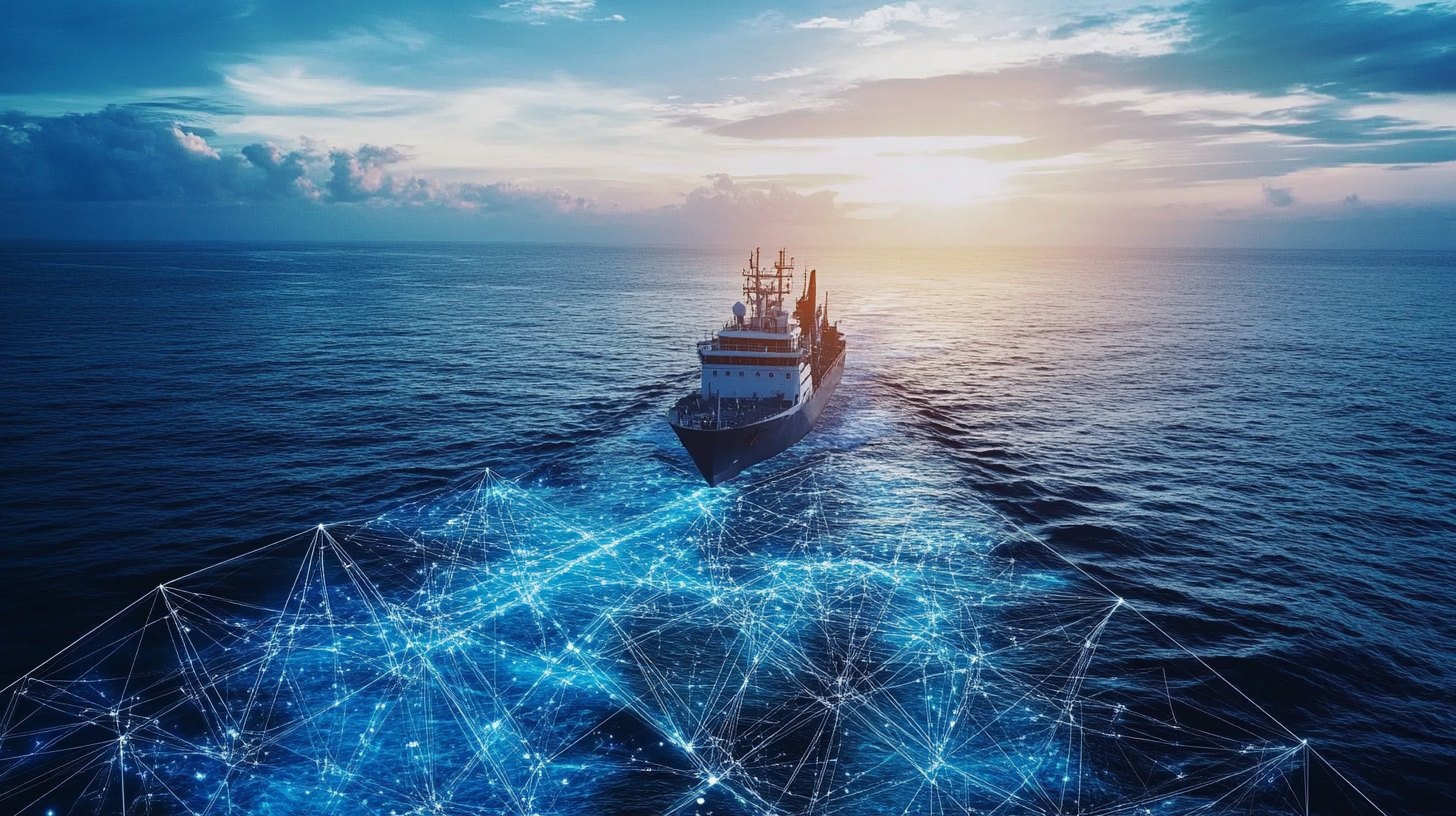The Future of Maritime Communications: VSAT Technology Revolution in 2025

The Future of Maritime Communications: VSAT Technology Revolution in 2025
Published by Renair | March 2025
The maritime industry is experiencing a digital transformation that would have been unimaginable just a decade ago. At the heart of this revolution lies Very Small Aperture Terminal (VSAT) technology, which has evolved from a luxury communication option to an essential operational requirement for modern vessels. As we navigate through 2025, the maritime VSAT market is not just growing—it's exploding with innovation that promises to reshape how ships connect with the world.
Market Growth and Unprecedented Demand
The numbers speak for themselves: the global maritime VSAT market, valued at $3.46 billion in 2024, is projected to surge to over $9.3 billion by 2032, representing a remarkable compound annual growth rate (CAGR) of 14.6%. This explosive growth reflects more than just technological advancement—it represents a fundamental shift in how the maritime industry operates, communicates, and delivers value to stakeholders.
What's driving this unprecedented demand? The answer lies in the convergence of several critical factors. Modern vessels are no longer isolated islands on the ocean; they're floating data centers that require constant connectivity for operational efficiency, crew welfare, regulatory compliance, and business continuity. The COVID-19 pandemic accelerated this transformation, highlighting the critical importance of reliable communication systems for both operational needs and crew mental health.
Technical Innovation: The Ka-Band Revolution
Perhaps the most significant development in maritime VSAT technology is the rapid adoption of Ka-band systems. While traditional Ku-band and C-band systems continue to serve many applications, Ka-band is emerging as the clear winner for next-generation maritime communications. This frequency band offers superior data speeds, enhanced satellite efficiency, and the bandwidth capacity needed to support bandwidth-intensive applications such as real-time video streaming, high-definition video conferencing, and IoT-based monitoring systems.
The technical advantages of Ka-band extend beyond simple speed improvements. These systems provide better signal quality in adverse weather conditions and offer more efficient use of satellite resources, which translates to cost savings for operators. For naval operations, the enhanced security features and resistance to interference make Ka-band systems particularly attractive for mission-critical communications.
Integration with Emerging Technologies
Modern maritime VSAT systems are no longer standalone communication solutions—they're becoming integral components of comprehensive digital ecosystems. The integration with Internet of Things (IoT) devices enables unprecedented levels of vessel monitoring and automation. Sensors throughout the ship can now transmit real-time data about engine performance, cargo conditions, environmental parameters, and safety systems, all through the VSAT connection.
Artificial intelligence and machine learning algorithms are being integrated into VSAT systems to optimize performance dynamically. These smart systems can automatically adjust antenna positioning, manage bandwidth allocation, and even predict and prevent communication failures before they occur. The result is a more reliable, efficient, and self-managing communication infrastructure.
Hybrid Communication Solutions: The Best of All Worlds
One of the most exciting developments in maritime communications is the emergence of hybrid solutions that combine VSAT with other communication technologies. Many vessels now employ systems that seamlessly switch between satellite and cellular networks when in coastal areas, optimizing cost and performance. The integration with low Earth orbit (LEO) satellite constellations like Starlink is particularly promising, offering lower latency and higher bandwidth in many scenarios.
These hybrid approaches ensure continuous connectivity while minimizing operational costs. When a vessel approaches port, the system can automatically switch to less expensive cellular networks for crew welfare and non-critical communications, while maintaining satellite connectivity for essential operational data.
Antenna Technology Advancements
The physical hardware supporting maritime VSAT has undergone remarkable evolution. Modern maritime VSAT antennas are smaller, lighter, and more efficient than ever before. Advanced stabilization systems ensure consistent satellite tracking even in rough seas, with three-axis stabilization technology maintaining precise pointing accuracy regardless of vessel movement.
The development of flat-panel antennas represents another significant breakthrough. These systems offer reduced wind resistance, lower profile installation, and easier maintenance while maintaining excellent performance. For smaller vessels where traditional dome antennas might be impractical, flat-panel solutions provide an attractive alternative.
Addressing the Challenges
Despite the tremendous advances, maritime VSAT technology still faces significant challenges. Latency remains a concern for real-time applications, particularly with traditional geostationary satellites. The integration of LEO satellite constellations is helping to address this issue, but comprehensive global coverage is still developing.
Cost considerations continue to influence adoption decisions. While VSAT service costs have decreased significantly, the initial hardware investment can still be substantial, particularly for smaller operators. However, the total cost of ownership calculation is increasingly favorable when considering the operational benefits, crew retention advantages, and compliance requirements that VSAT enables.
Regulatory and Safety Implications
Maritime VSAT systems are becoming increasingly important for regulatory compliance and safety applications. The International Maritime Organization (IMO) has introduced new requirements for vessel tracking and reporting that often require robust satellite communication capabilities. Emergency response systems, crew safety protocols, and environmental monitoring all benefit from reliable VSAT connectivity.
The integration of Automatic Identification System (AIS) data with VSAT communications enables enhanced vessel tracking and collision avoidance. Weather routing applications can access real-time meteorological data to optimize voyage planning, reducing fuel consumption and improving safety.
Looking Ahead: Future Developments
As we look toward the remainder of 2025 and beyond, several trends will shape the future of maritime VSAT technology. The convergence with 5G networks promises to bring terrestrial-level performance to maritime environments. Edge computing capabilities will enable more sophisticated onboard data processing, reducing bandwidth requirements and improving response times.
Sustainability considerations are driving innovations in power efficiency and environmental impact. New antenna designs incorporate recyclable materials and energy-efficient operation, aligning with the maritime industry's growing commitment to environmental responsibility.
Conclusion: Navigating the Connected Ocean
The maritime VSAT revolution is not just about better internet access at sea—it's about fundamentally transforming how the maritime industry operates. From autonomous vessel operations to predictive maintenance, from crew welfare to environmental monitoring, VSAT technology is enabling possibilities that were inconceivable just a few years ago.
For maritime operators, the question is no longer whether to invest in VSAT technology, but how to select and implement the solutions that best meet their specific needs. The rapid pace of innovation means that today's cutting-edge systems will be tomorrow's baseline, making it essential to choose solutions that can evolve with advancing technology.
As we continue through 2025, the ships that embrace advanced VSAT technology will enjoy competitive advantages in operational efficiency, crew satisfaction, safety, and regulatory compliance. The ocean may be vast and challenging, but with modern VSAT systems, no vessel need ever be truly isolated again. The future of maritime communications is here, and it's more connected, capable, and promising than ever before.
For more insights on maritime communication solutions and antenna technologies, explore Renair's comprehensive range of marine VSAT antennas and communication systems designed for the modern maritime industry.
Understanding the Innovative Technologies Behind Our Antenna Solutions
At Renair, we utilise cutting-edge technology to design antennas that excel in performance and reliability. Our manufacturing process incorporates rigorous testing to ensure each product meets the highest standards. This commitment to quality guarantees that our antennas provide seamless connectivity for a variety of applications.

Navigating the New Radio Regulations: ITU 2024 Updates and Their Impact on Global Communications
Understand the ITU 2024 Radio Regulations that took effect January 1, 2025. Explore new spectrum allocations for 5G/6G, satellite communications, and IoT applications from the WRC-23 conference outcomes.

The Future of Aviation Antennas: From 5G Integration to Autonomous Flight Communications
Explore the transformation of aviation antenna technology with 5G integration, LEO satellite communications, and autonomous flight systems. Discover how the $1.5B market is evolving to $2.5B by 2033.

5G Antenna Technology Trends: Smart Beamforming and MIMO Innovations Shaping 2025
Discover the revolutionary advances in 5G antenna technology driving the $45.4 billion smart antenna market. Explore massive MIMO, AI-enhanced beamforming, and phased array innovations that are transforming wireless communications.
Our Customers
Lorem ipsum dolor sit amet, consectetur adipiscing elit.
“The team at Renair is always ready to assist, providing expert advice and quality products.”


“Renair’s bespoke antenna solutions have significantly enhanced our system performance.”


“We rely on Renair for all our antenna needs. Their products and service are consistently excellent.”


“Renair’s team provided exceptional support throughout our project, ensuring seamless integration.”


“The quality of Renair’s antennas is unmatched. Our communications have never been clearer.”


“Renair’s customer service is top-notch. They promptly addressed our queries and provided tailored solutions.”


Get in Touch with Us
Contact Renair today for inquiries, partnerships, or to learn more about our solutions.
